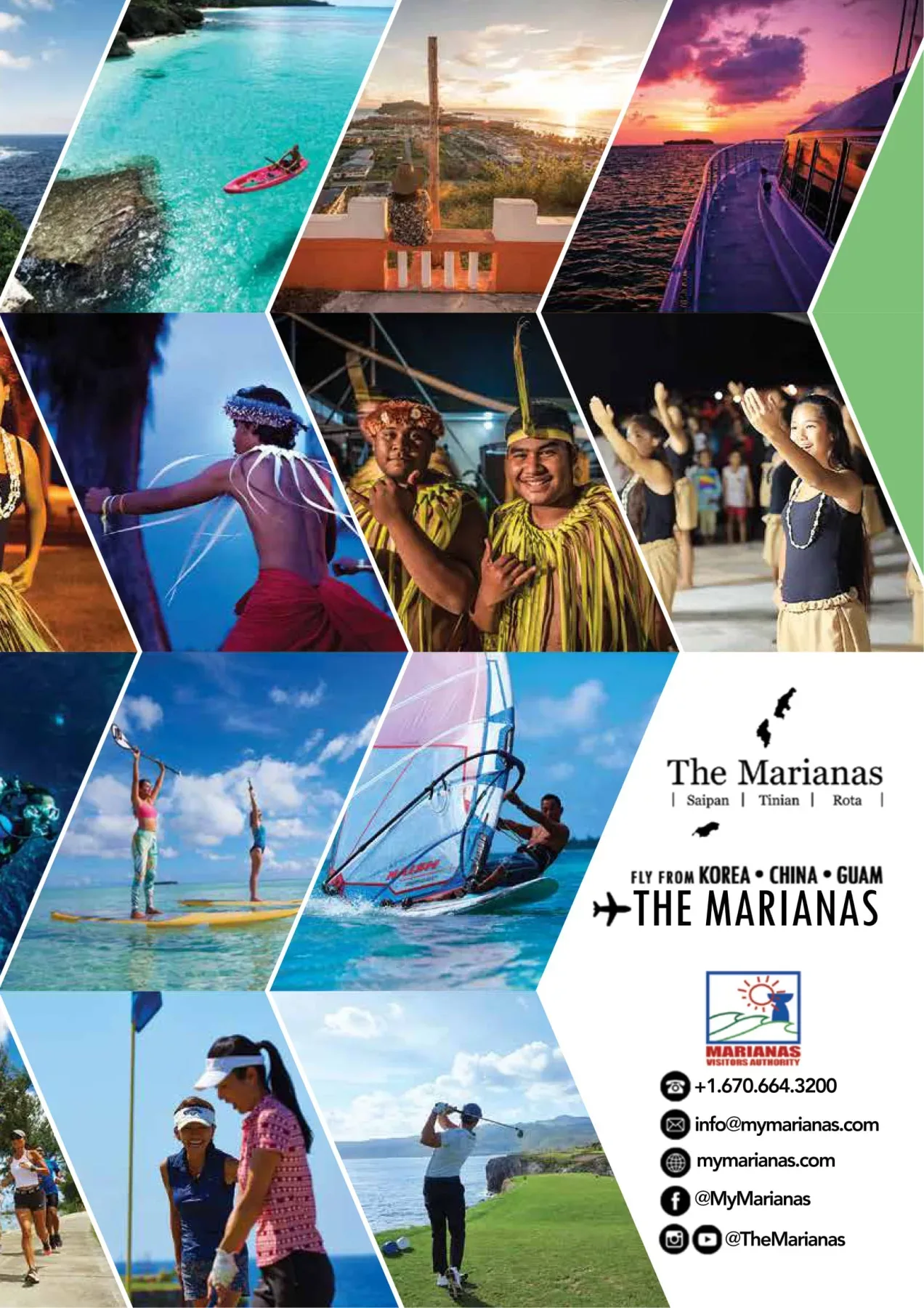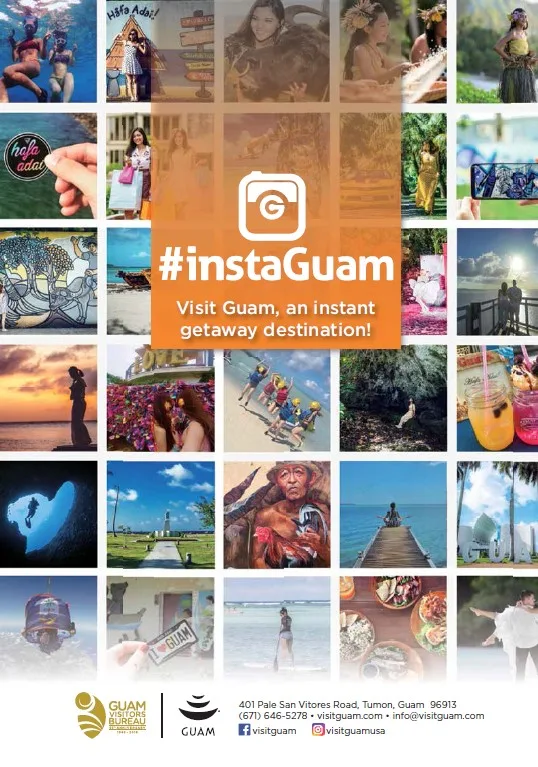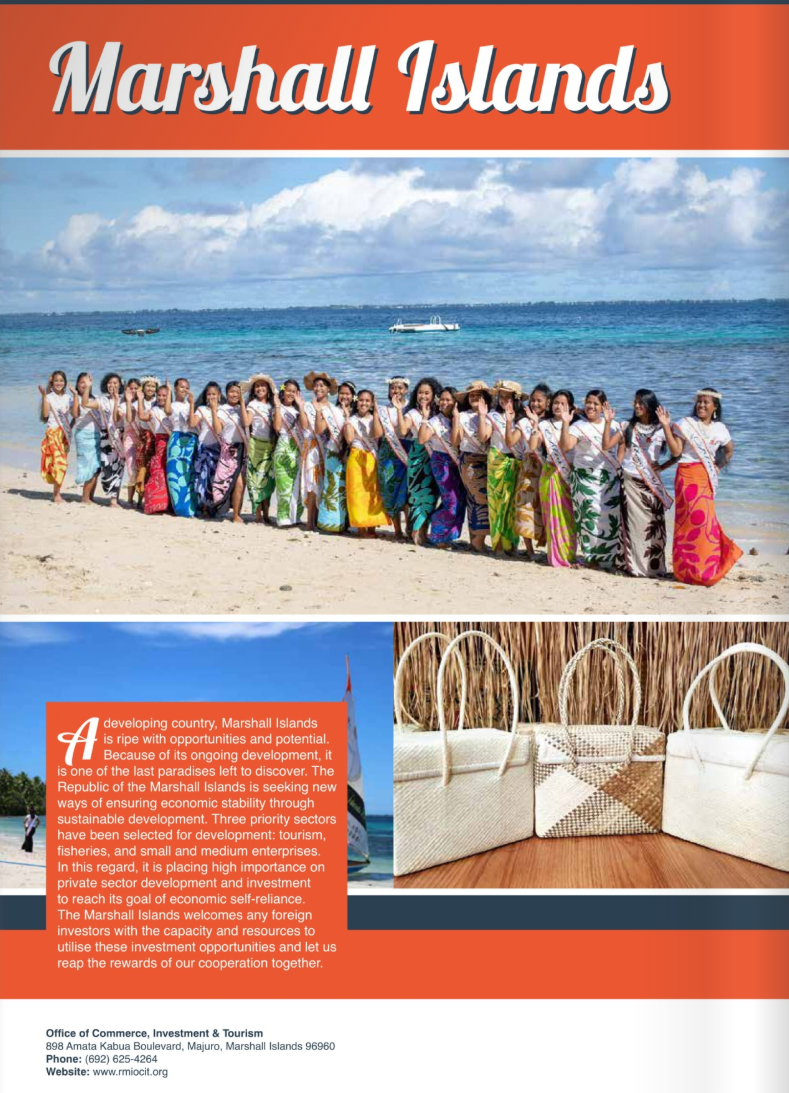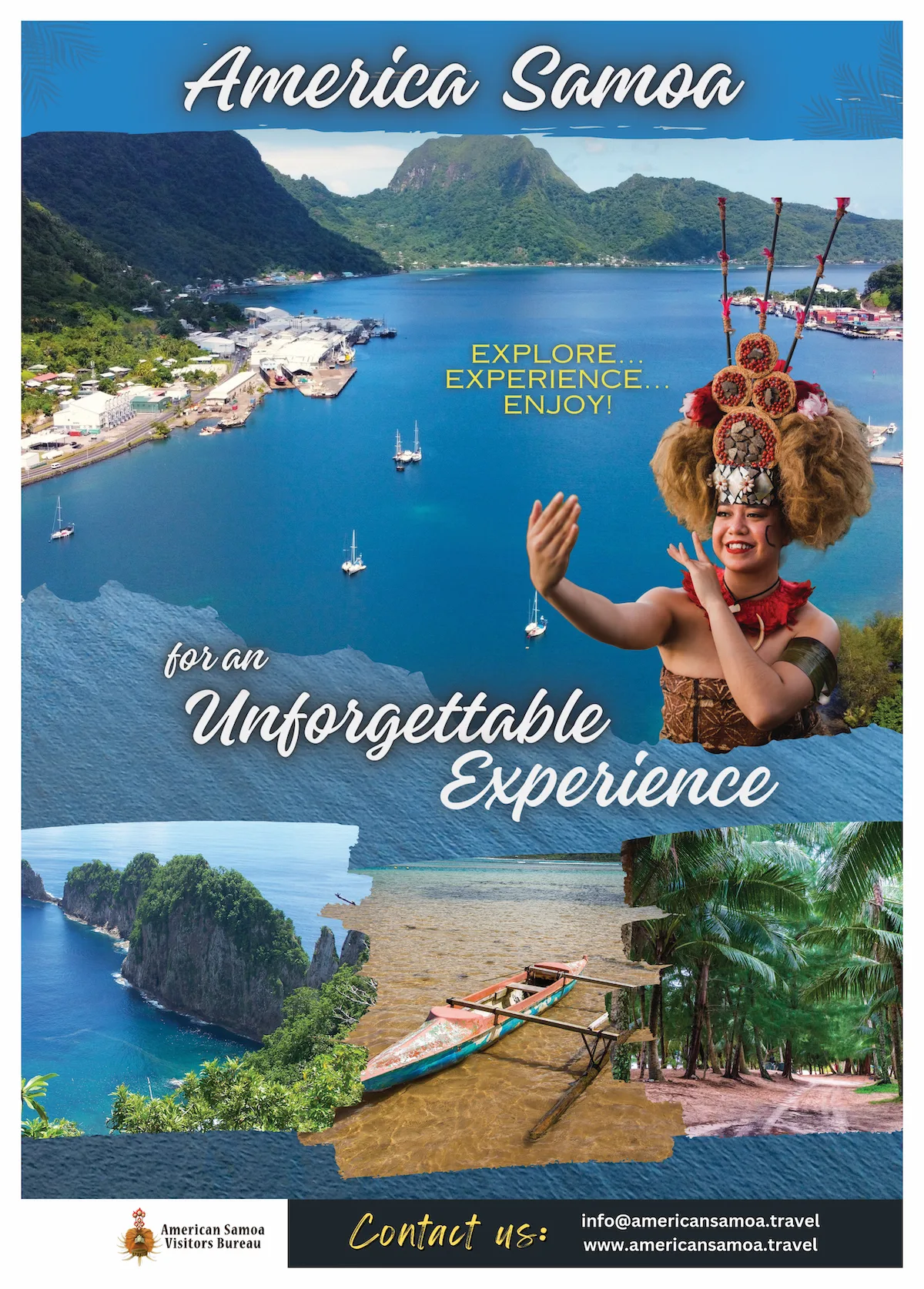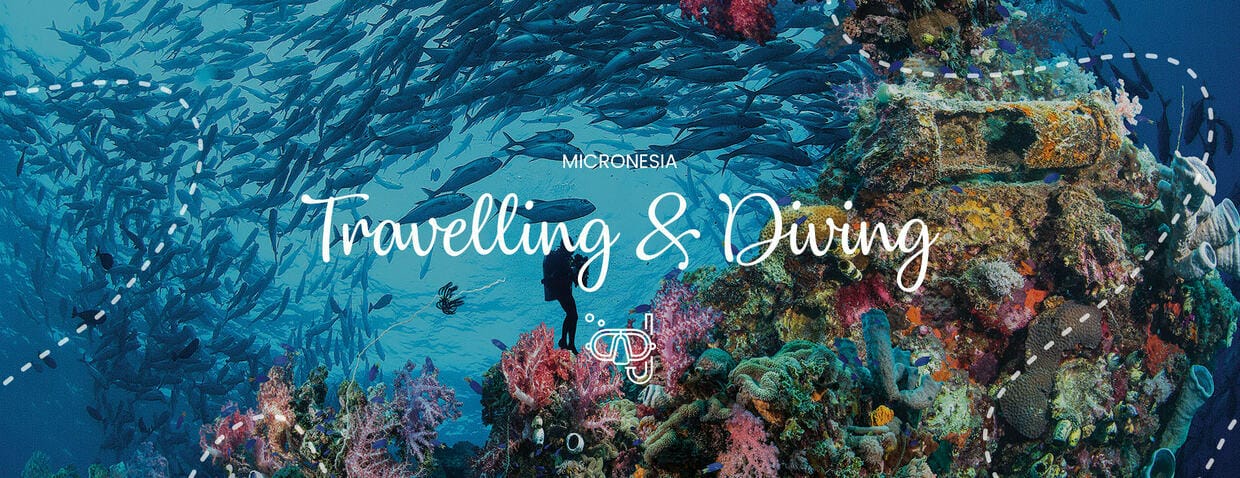
YOUR GUIDE TO TRAVELLING & DIVING IN MICRONESIA
Micronesia is the ultimate tropical paradise. These tiny, largely uninhabited islands are home to a vibrant culture and welcoming society that plays host to travellers from around the world throughout the seasons.
Despite its long colonial history – having been occupied by Spain, Germany, Japan, and the United States – Micronesia has retained its own culture, valuing a relaxed lifestyle with simple, comfortable ways, and synchronicity with the environment.
Located in the Western Pacific, different ocean currents converge and the waters are warm throughout the year. The islands are far from major landmasses and the population remains small. The seas are clear, offering outstanding visibility, great biomass, and many pelagics.
Micronesia’s warm waters and always hospitable temperatures are amongst its key draws, and there is a wealth of activities for an adventure holiday. Stand-up paddling, kayaking, and snorkelling in Jellyfish Lake are popular pass times, and many visitors are attracted to Peleliu Island, the site of a key World War II battle and current home to an array of historical artefacts.
Nan Madol is another popular tourist attraction. A city constructed in a lagoon, the site consists of a series of small artificial islands linked by a network of canals on Pohnpei. More dramatic ruins can be found in the Lelu complex on Kosrae; and Yap, the island of the famous stone money, is also located here.
But of course, the biggest draw here is the diving.
Mind-blowing dives and the holiday of a lifetime
Micronesia provides many, many world travellers with the greatest diving holidays of their lives. The waters are home to some of the most majestic creatures any diver can hope to meet and the reefs are stunning.
Palau in particular is a diver’s dream. Part of an archipelago of more than 500 islands, Palau is located in the Caroline Island group of Micronesia. Just 12 of these islands are inhabited. Visibility tends to remain at 20-30 m, with water temperature a very comfortable 28° C/75-90° F. It is, in effect, a tropical remote dreamscape.
Abundant marine life
Palau offers pristine reefs, vertigo-inducing drop-offs, thrilling drift dives, and abundant marine life. Its waters are warm and clear throughout the year, giving outstanding visibility to enjoy the incredible marine life. With pristine reefs teeming with life, divers are sure to encounter large pelagics, mantas, sharks, eagle rays, turtles, and Mandarin fish.
The National Oceanic and Atmospheric Administration (NOAA) says:
‘Palau’s rich marine biota includes approximately 400 species of hard corals, 300 species of soft corals, 1400 species of reef fishes, seven out of nine of the world’s species of giant clams, thousands of other invertebrates (many still to be identified), the world’s most isolated colony of dugongs (a relative of the sea cow) and Micronesia’s only saltwater crocodiles’.
Drift dives and reef hooks in Palau
There is a diverse range of dive sites to choose from. Some are shallow, whilst others fall to more than 40 metres. So, there is likely to be the ideal spot for all divers, regardless of their level of experience.
A typical Palau dive is likely to mean drift dives and reef hooks.
A drift dive begins with a 50-60ft descent, and then either becomes a gliding drift over the reefs and along walls as the current carries you, or you may stop and anchor yourself to a sturdy outcropping of rock, allowing the current to bring the reef life to you.
A reef hook is a fishing hook with the barb removed and attached to a 3-5 metre rope. The hook is attached to a dead part of the coral reef and the other end to your BCD. Reef hooks are well accepted in Palau, albeit only at sites with consistent current and plenty of dead coral.
Blue Corner is the most popular reef diving site, with the currents here bringing in the big fish. The site is home to sharks, jacks, tuna, and resident Napoleon wrasse. For mantas, the German Channel is an ideal spot. Here, divers rest on the ocean floor whilst the mantas circle above.
Wall diving is also popular, benefitting from Palau’s store of healthy hard coral.
An all-year-round diving destination
Palau is an ideal diving destination, with liveaboard safaris operating all year round. Visitors easily enjoy five dives a day, including night dives on liveaboards; and 2-3 dives per day are common for land-based diving.
The marine life is largely present throughout the year, with blacktip reef sharks, eagle rays, hammerhead sharks, dolphins, whitetips, and oceanic whitetips all sighted throughout the seasons. Other creatures are a little less common, with whale sharks and manta rays more likely between January and April, and green and hawksbill turtles most frequently between April and July period.
Despite its nutrient-rich water, visibility is excellent at usually more than 40 metres. With heavier wind and rain in July to September, this can drop to 15-20m.
Palau is generally most popular with divers between November and May. But to get the very best of your trip, you should also consider the price of accommodation and how busy the popular dive sites are likely to be.
Weather conditions in Palau
Situated in the tropics, Palau gets a lot of rain all year round, with an average rainfall of 3760mm. It largely falls at night though, and so is unlikely to cause of a problem for visitors and holidaymakers.
Water temperatures remain 29-30°C for most of the year, falling to 26°C briefly in February and March. Divers tend not to need anything more than a thin neoprene wetsuit.
Air temperatures are around 28°C, with 29-30° during the day and 24-25° during the night.
The Palau rainy season is between June and August. At this time, the trade winds shift, bringing more rain. February and March tend to be the driest months, with an average humidity of 80%. The rainy seasons still include lots of dry days though, and the dry days can still see plenty of rain.
As Palauan President Tommy Remengesau Jr once noted, ‘In Palau you can guarantee that you can catch a fish if you go fishing, but you can never guarantee what the weather will be’.
Fortunately, typhoons are rare as Palau lies beyond the main typhoon path. However, the typhoon season in the region is June to December, and occasional storms and high winds reach Palau during these months. Typhoons are least likely between February and April.
The ‘high season’ in Palau
Purely in terms of weather conditions, the best diving season in Palau is generally considered to be from December to March. During these months, you will enjoy calmer, warmer water and less rain.
However, of course, hotels are also pricier and the dive sites busier. If you are going to visit during the high season, book your accommodation well in advance.
The ‘low season’ in Palau
The low season, in contrast, falls in May, June and September. During these months, Palau experiences the most rain and wind, though it remains hospitable.
Owing to the relatively poor weather conditions, there are fewer divers, the dive sites are less busy – and airfares and accommodation are thus cheaper.
The diving is still excellent, however, and the majority of dive sites remain accessible throughout this period.
The ‘transitional months’
In the remaining months – April, July, August, October, and November – visitors can make a trade-off between prices/popularity and weather conditions.
Palau sees more rain during this period, but accommodation is usually cheaper and easier to find.
Costs to consider
- Hotels in Palau are expensive, but divers can benefit from ‘room-and-scuba’ package deals with the local dive centres.
- Quotes from dive operators will not tend to include equipment rental, and full-set hire costs US$50-75 per day.
- A permit is required for diving and snorkelling. For Rock Island, these cost US$50 and are valid for ten days. The Peleliu permit is US$30. All permits can be purchased at dive shops.
Don’t forget…
- Due to the risk of decompression sickness, your last dive should be completed at least 24 hours before flying.
- Certified divers will be required to show proof before a reputable dive operator will take you out on a dive. So, make sure you bring your papers.
The best dive sites in Palau
The most popular dive destinations in Micronesia are Chuuk/Truk Lagoon, where visitors particularly enjoy the WW2 wrecks; Yap Island, with its mantas, sharks and macro marine life; Pohnpei, with its ‘Manta Road’, named for the resident community of Manta rays; the beautiful Guam; and of course Palau.
And Palau itself is home to a diverse array of dive sites. Let us introduce you to just a few of them.
CHANDELIER CAVE
Chandelier Cave is a large cave with five ‘rooms’ or chambers. Divers can enter the cave at 25ft, and swim from room to room through underwater tunnels. Surface in the chambers to look around and explore the stalactites and stalagmite formations.
An excellent spot for a wide-angle photo!
Mandarin Fish, crabs, and shrimps can be found near the entrance, as well as damsel fish and solider fish in the deeper water.
Needless to say, this is an adventurous dive. Both the diver and guide – a guide being essential! – must be experienced. You should all be properly trained and equipped, with at least cavern certification. You will need lines, reels, and backup lights.
In addition, there is minimal light and visibility can potentially fall to zero. In these cases, it is possible to become lost. Consequently, dives must be conducted at the right time of day and in the right conditions.
GERMAN CHANNEL
The German Channel separates the Ngemelis and Ngercheu Islands, forming a connection between the inner lagoon and open sea. Created over a hundred years ago, the manmade channel enjoys nutrient-rich waters brought up from the depths on strong currents, and today attracts both a wealth of marine life and keen divers.
Famous for its mantas, eagle rays, reef sharks and species of schooling fish population, the site is home to virtually every sort of tropical marine life. Fly effortlessly over the reef, or simply settle in a lively area and wait for the action to come to you. The Channel hosts a manta cleaning station, so hover in place and observe the cleaner fish removing parasites from the skin of the rays.
Boating traffic can be heavy here, so caution when surfacing is a must. A member of your team should send up a safety sausage (SMB) on a line before the final ascent.
ULONG CHANNEL
The Ulong Channel is one of the best drift dives in Palau, offering unparalleled opportunities to glide over white-sand valleys and sprawling lettuce corals. Divers can hook onto the reef and observe hunting sharks, jacks, barracudas, and groupers in their natural habitat, before riding the current along the channel.
The site has a depth of 5-20 metres, and is accessible to intermediate level divers (and upwards). Located in the northern Rock Islands, west of Ulong Island, it can be reached by a 40-50 boat ride from Koror.
SIAES TUNNEL
A large tunnel deeply undercutting a sheer wall, the Siaes Tunnel is certainly atmospheric. Its vast chamber boasts picturesque coral formations and gorgonians, and it is home to manta rays and whitetip sharks.
JELLYFISH LAKE
Jellyfish Lake is a world-renowned site. Home to a vast number of jellyfish, the lake is isolated from the sea, but connected to the outside by a network of fissures and channels in the porous limestone. The lake’s tides rise and fall, in sync with those of the surrounding lagoons. The spot is accessed by a short hike over a jungle-covered ridge.
The jellyfish stay close to the surface, migrating across the lake daily to follow the sunlight and obtain the energy they need from the photosynthetic algae in their tissues. Snorkelling is the perfect way to observe and photograph these famous jellies.
Though they do have the ability to sting, it is so mild as to be largely unnoticeable (except on sensitive tissue like lips).
Jellyfish Lake is also home to anemones, sponges and tunicates, as well as gobies and other small fish.
BLUE CORNER
The world famous Blue Corner is thought to have been the birthplace of reef hook diving. A ridge at 15-20 metres, it extends out into the ocean and then drops into the deep.
An excellent site for divers of all levels of experience, novices will particularly enjoy the abundance of hard and soft corals. When there is a current, the site is excellent for drift diving, which unfortunately should only be undertaken by experienced divers as the currents can get intense and change direction quite rapidly.
The site forms a gathering point for reef fish of every description. There are schools of jacks, snappers and barracuda, as well as white-tip and grey reef sharks and Napoleon wrasse. There are also eagle rays, mantas, turtles, tuna, and wahoo. Lucky divers can even meet billfish, whale sharks, and whales.
Located in the southern Rock Islands, northwest of Ngemelis Island, Blue Corner can be accessed by boat from Koror in 50-70 minutes.
BLUE HOLES
Within easy swimming distance of Blue Corner is the sister site of Blue Holes. This large cavern is accessible from both the shallow reef top and deeper points on the wall, and it is ideal for divers of all levels of skill.
There are four vertical shafts, reaching down 35 metres, and each opening on the top of the reef. The shafts lead down into a vast cavern, and the shafts of sunlight from overhead give this spot a genuinely sublime beauty. A dive here is genuinely an otherworldly experience.
Blue Holes is in the southern Rock Islands, northwest of Ngemelis Island, with a depth range of 5-25 metres. The spot can be reached by boat in 50-70 minutes from Koror.
CHUYO MARU
Situated close to Koror, Chuyo Maru is a shipwreck resulting from a bombing in April 1944. The site is now home to a range of fish life, and is covered with soft and hard species of coral. The remaining artefacts include a large anchor winch, stern gun, and the remains of a brass compass.
HELMET WRECK
Helmet Wreck is another popular shipwreck dive. This Japanese coaster was sunk during WWII and is today the site of various wartime remains and ship artefacts, including rifles, ammunition boxes and electrical pars. The site’s name comes from the many helmets found in the aft hold, melded together by decades of corrosion.
PELELIU WALL
For lovers of drift diving, Peleliu Wall is the ideal dive spot. The deepest reef structure in Palau, it is not without its risks, but dives at 80-90 feet are considered ideal.
There are huge coral fans on the face of the wall, with crevices housing marine life attracted by the nutrient-rich current waters. There are also sharks, barracuda, and jacks – all feeding on the Moorish Idols, Yellowtail Fusiliers, Bumphead Parrotfish, Pyramid Butterflyfish, Palette Surgeonfish and Sergeant Majors.
For more information contact
Palau Visitors Authority
Address: PO Box 256, Koror, PW 96940
Phone: +680-488-2793/1930
Email: [email protected]
Website: www.pristineparadisepalau.com
Fax: +680-488-1453

